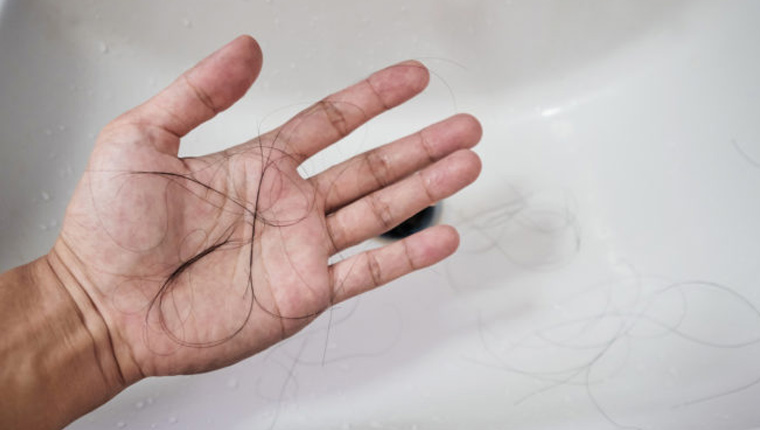Hair transplantation

Prevention - Treatments
Male pattern hair-loss or Androgenetic alopecia (MPHL) is the most common cause of hair loss and thinning. It affects the scalp of men’s heads at a rate of 80% and, to a lesser extent, 40%of women. The causes of hair loss remain unknown however, it is beyond doubt that genetic predisposition , plays a role in androgenetic alopecia. Androgenetic alopecia and its appearance is due to the effect of androgens on hair follicles and in particular to the hypersecretion of dihydrosterone (DHT) and 5a reductase-I & II enzymes.
Symptoms
- Prolonged intense hair loss (over 100 hairs daily)
- Progressive recession of hair on the temples
- Thinning hair at the top of head
- Decrease of initial hair density indicating androgenenic alopecia development
- Hair thinning.
Diagnosis
The diagnosis starts with a complete medical history and blood or hormonal tests, , on a case by case basis. This is followed by a pull test , as well as a biopsyis some cases.
In the next diagnostic phase we use sophisticated cameras and magnifiers in conjunction with dedicated software (application) program for measuring density, quality, anagen and telogen phase hairs in the donor or recipient area.
Subsequently, we draw diagnostic conclusions on alopecia, possible skin and hair treatments, as well as the candidate’s potential to undergo hair transplantation.
Treatment of hair loss
Hair loss treatment with medication cannot be permanent. If left untreated, androgenic alopecia is a constantly evolving condition.
There are two globally approved medications for the treatment of androgenetic alopecia, (Minoxidil) and a substance called Finasteride.
Minoxidil is available as a topical solution or foam 5%. Often, a mixture of minoxidil with cortisone acts as anti-inflammatory agent against the cause of inflammation of hair follicles, which is often unknown.
Many studies have shown that daily doses of Fenasteride 1gr have beneficial effects following long-term use (over 2 years ) as regulator of the DHT hormone by inhibiting the 5-a- reductase enzyme. However, since it is a compound drug, an endocrinologist has to monitor and control treatment onset and long-term use to prevent side effects . Our experience has shown that the side effects are quite rare and mostly reversible.
Dutasteride, is still being studied at clinical trials aiming at confirming its efficacy. Its mechanism of action is similar to that of finasteride. It has not been approved (off-label) although it has been approved in a number of countries in Europe and in the US.
Injectable mesotherapy contains vitamin cocktails, trace elements, antioxidants from well-known manufacturers.
Injectable autologous mesotherapy with PRP. It is an autologous tissue rejuvenation and regeneration treatment , via platelet-rich plasma, which is injected into the affected area.
Treatment of androgenetic alopecia may be conservative or surgical.
When androgenic alopecia is resistant to conservative therapeutic agents it can be surgically treated by hair transplantation.
The lack of hair growth on the scalp in genetically predisposed individuals is often accompanied by adverse effects on male skin health such as actinic keratosis and the possibility of malignant transformation caused by the effects of solar radiation. It also greatly affects the patient’s psychological state of mind and daily routine.
Tips for hair transplantation candidates
It turns out that alopecia is a condition associated with many social and psychological problems with billions of people suffering all over the world. It is a major problem for many men but also women that affects their social, professional and personal life and therefore necessitates a very careful scientific and human approach.
For those who decide to make one or more attempts to restore their hair, they should understand the following important points, which have proved to be key to the ultimate successful overall approach.
- They should change their lifestyle and adopt exercise and a healthy diet including several antioxidant foods.
- They should regulate and check their health status to identify potential iron, ferritin, B12, and folic aciddeficiency, which could increase hair loss without causing alopecia.
- Understanding the cause of hair loss.
- Understand your own personal potential, in relation to your donor area.
- Understanding some mathematical approaches, affecting the extent of the alopecia problem in relation to the square centimeters area and the rate of follicular unit extraction as a whole from the donor area.
- Understanding this harmless method.
- Understanding the evolution of the problem and the loss of hair in the years to come.
- Your expectations, which we need to understand as a clinic, based on our scientific training and human approach. We are being asked, taking into account all of the aforementioned parameters, to undertake the commitment, that we will achieve the desired resultfor you, which can vary greatly between patients…